

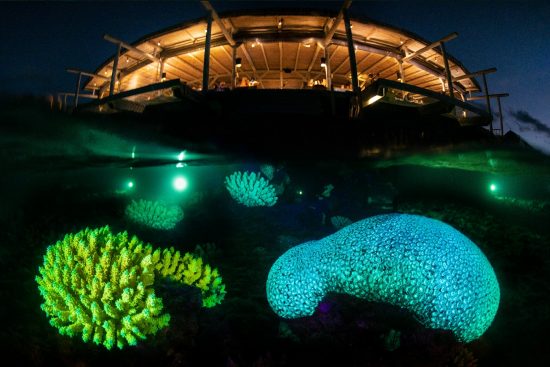
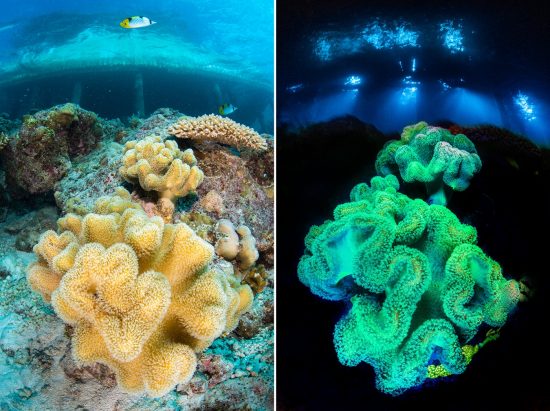
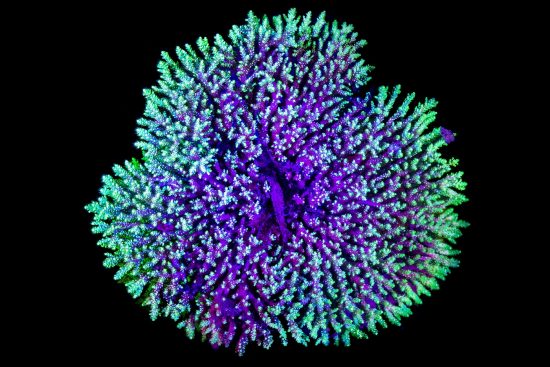
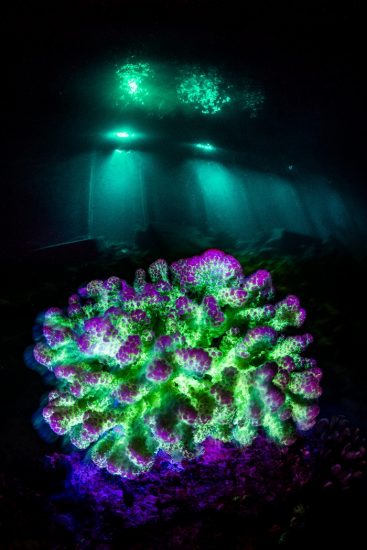
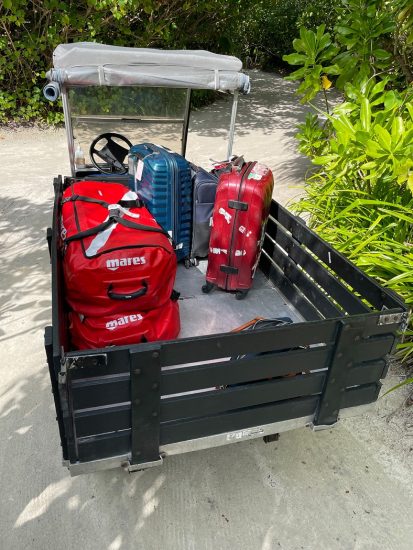
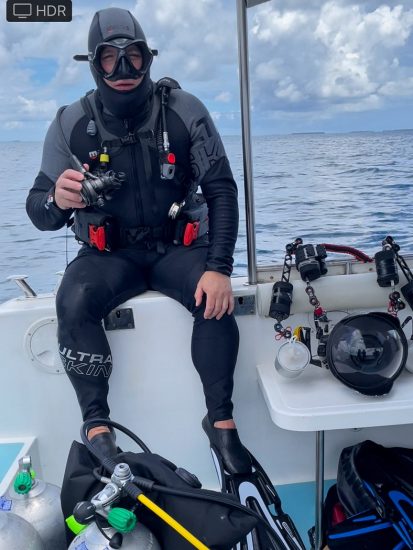
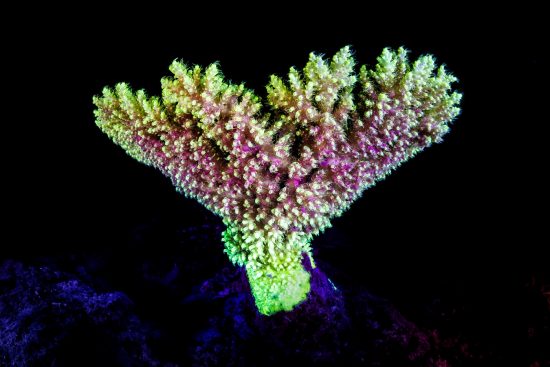
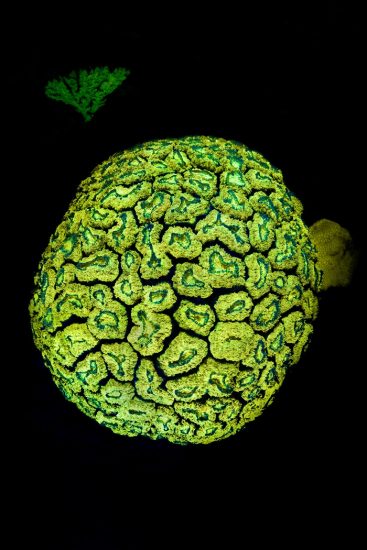
Trying to search for any positive in the travel restrictions of the last few years is tough, but at the very least I have built up quite a stash of new underwater photography gear and gadgets to try. This means that as I begin travelling again, I have plenty of imaging toys to put through their paces. One of the techniques I was most excited to try was shooting with some new fluorescence photography equipment.
Fluorescence is commonly confused with bioluminescence, but actually they are completely different. As divers we often see bioluminescence. It is the production of light by a living organism. It’s what you see when you turn off your torch at night and wave your hands through the water - the disturbance causes bioluminescent plankton to light up. Fluorescence is different and can’t be seen without a light source because it occurs when a subject absorbs light at one colour and emits it at another. Fluorescence can be produced by something living, like a coral, but is also why some colourful clothes glow under the UV lights of a disco!
The classic setup for photographing fluorescence is to use a strongly blue or ultraviolet light source. And then a yellow filter on the lens, which blocks the blue light and allows us to photograph the other fluorescent colours. All the non-fluorescent subjects will photograph black. So on a reef, corals that are usually beige during the day, shine in greens, yellows, oranges and purples. Fluorescent filters vary, and my aim is not the perfect scientific result, but instead the most artistically interesting.
In the Maldives, I had new filters from Fire Night Dive, but my trick card was that they were sized to fit on the reflectors on my Retra flashes. These are a new innovation in underwater photography that double the brightness of light from my flashes, by focusing more of the light. Fluorescence photography is always a battle against very low light levels, so this innovation was a big advantage, allowing me to take wide angle images. I am really pleased with the pictures from the Maldives that are very eye-catching and a great celebration of the recovering corals on those reefs.
In addition to testing camera gear, it was also a chance to make some back to back tests of some new arrivals in the dive gear department. My family joined me for the first week of the trip, which opened up some extra baggage allowance until they went home. So I took both my regulators, the heavier EPIC ADJ 82X and the lighter DUAL ADJ 62X. Both are great regulators. The EPIC oozes quality, you notice it from the first breath. It is just a real pleasure to use, as with anything of high engineering quality, like a fine watch or prestige car. I’ll try and squeeze it in on all my trips when luggage allowances permits, but on this occasion, to balance the bags, I had to send it back home with the family, and was very content using the DUAL for the remainder of the trip, which is a fine alternative and so travel-friendly.
I also had the chance to test my warmest water suits: the full body Ultraskin Steamer suit and the 0.5mm Coral wetsuit. Both surprised me with how warm they were. The Ultraskin is neutrally buoyant and I was able to dive with it without weights. I actually used my weight pockets for carrying camera accessories, but it is nice to know I could leave them at home on trips where I am tight for every gram of luggage allowance. Actually, I slightly preferred the Coral suit on this trip, which I could just dive without any weight, although I was probably helped that both my camera and me sink slightly. I found the Ultraskin marginally warmer, but both were ideal in the Maldives, and it is hard to judge definitely as the water temperature does fluctuate here with the swirling currents. I am yet to try the Ultraskin in its other role as a drysuit undersuit. Finally, even if you are not in the market for a warm water suit, do check out the Ultraskin hood – I wear a hood on most dives as I don’t have any hair, so I am something of an expert. This hood is warm and so comfortable and you can hear brilliantly through it, which isn’t always the case with neoprene hoods.
 Alex
Alex 20th December 2021
20th December 2021